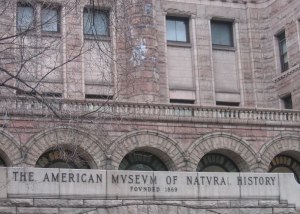|
|
New York - New York City
 Altitude, 17.06 at Customhouse, Manhattan, and 409 at Todt Hill, Richmond; pop. 8,143,197; boroughs— Manhattan, Brooklyn, the Bronx, Queens, Richmond ( Staten Island); area 322.83 sq. m.; settled 1625, incorporated 1653; government—mayor, city council, board of estimate, borough presidents, and numerous boards, commissions, and agencies. Altitude, 17.06 at Customhouse, Manhattan, and 409 at Todt Hill, Richmond; pop. 8,143,197; boroughs— Manhattan, Brooklyn, the Bronx, Queens, Richmond ( Staten Island); area 322.83 sq. m.; settled 1625, incorporated 1653; government—mayor, city council, board of estimate, borough presidents, and numerous boards, commissions, and agencies. Street Order and Numbering: While the other boroughs are a maze of streets, in Manhattan, except for the southern and, in part, the northern tips, the streets are laid out on a gridiron pattern, making it by far the easiest of the boroughs in which to get around. Avenues run north and south, streets cast and west. Up to 138th St., where Fifth Ave. ends, the buildings on the cross streets are numbered east and west of Fifth Ave., and the street names are prefixed E. and W. accordingly. The section east of Fifth Ave. is popularly referred to as the 'east side,' that west of the same avenue as the 'west side.' In Manhattan, all north of 138th St. is west. The addresses of avenue buildings are numbered south to north.
'Uptown'and 'downtown,' popular directional expressions, are relative terms: traveling south from any point is to travel downtown, and north from any point uptown. By and large, however, the downtown district is below 14th St. Occasionally 'midtown' is used to designate the area embraced by Seventh and Lexington Aves. and 34th and 57th Sts. 'Cross-town' is from east to west and vice versa.
The average New. Yorker, conditioned to crowds, speed, Wall Street, even violent death, takes his city for granted. The visitor approaching the city sees spread before him one of the most congested habitations of men on earth, the lofty towers of Manhattan marking the apex of a vast jungle of structures in which men work, sleep, eat, play. Little more than three centuries has sufficed for the building of this gigantic city. The miracle of its upsurge since the turn of the present century makes it a dynamic expression of American civilization. In that sense New York is America.
Two events were of decisive importance in this development: the opening of the Erie Canal in 1825, and the creation, under State charter, of Greater New York in 1898. The former established the commercial supremacy of New York—a position thenceforth never threatened—over the rival ports of Boston, Philadelphia, and Baltimore, and made the city the great gateway for European immigration. The creation of Greater New York brought into the city's jurisdiction not only areas as densely settled as lower Brooklyn, but also forests, farms, and marshes—a huge area for further expansion.
Most New Yorkers do not own their own homes; they rent apartments, and move about almost as freely as tent-dwellers. Population shifts in recent years have made Brooklyn the most populous borough, with the Bronx rapidly rising to challenge that primacy. Manhattan—the commercial, industrial, financial, and amusement center—is decreasing in population.
The city is a cluster of ethnic groups. Definite foreign colonies exist, but the lines are constantly shifting; and with the passing of the years, especially since drastic restrictions have been imposed on immigration, many Old World customs have been lost. On the other hand, much that has come to be considered peculiarly American is the direct contribution of these latter-day citizens. The Negroes are in some ways the most American of all.
New York is one of the greatest centers of museums in the world. Among the best known are the American Museum of Natural History, the Metropolitan Museum of Art, the Brooklyn Museum, the Washington Heights group, the Museum of Modern Art, and the New York Museum of Science and Industry.
New York City's contribution to the growth of the arts in America has been the provision of a market place and a critical audience for the artist's products. New York is the great center of the Nation's publishing industry. Relatively few of America's artists have been New Yorkers, but since the middle of the nineteenth century they have constantly sought out the book and music publishers, the periodicals, the newspapers, the stage, the art galleries, and the studios of Manhattan.
The city's tempo; its racy vernacular, its endless variety, its wilderness of brick and steel, and its tumultuous humanity have provided a rich reservoir for creative artists. The multitude and magnitude of its skyscrapers constitute New York City's one great contribution to architecture.
New York - New York City - Harbor and Rivers
The Port of New York, one of the largest in the world, and served by more than 300 motor truck lines and 100 trunkline railroads, embraces the area within a 25-mile radius of the Statue of Liberty with an approximate population of 18,000,000.
The port is fringed by 771 miles of shore line. Along the more than 578 miles within the city limits are 1,800 piers, wharves, and bulk-heads. The North (Hudson) River water front of Manhattan, the most intensively developed, is bordered with the piers of the great transatlantic and South American shipping companies.
On the Brooklyn water front are hundreds of large industrial plants, warehouses, and extensive drydocking and ship repair facilities; Bush Terminal is one of the largest docking, storage, and industrial developments in the world. On Staten Island is the only free port zone in the United States.
|
|
This website is created and designed by Atlantis International, 2006
This is an unofficial website with educational purpose. All pictures, and trademarks are the property of their respective owners and may not be reproduced for any reason whatsoever. If proper notation of owned material is not given please notify us so we can make adjustments. No copyright infringement is intended.


